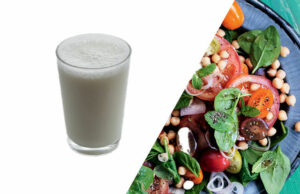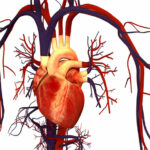HOW TO PUT TYPE 2 DIABETES INTO REMISSION

Evidence accumulated over the past few decades indicates that significant weight loss is the key underlying mechanism behind diabetes remission. Indeed, randomised controlled trials indicate that weight loss of 10–15% (8-12 kg (18 – 26 Pounds) for an average adult) may lead to normalisation of pancreatic function and remission of type 2 diabetes (1, 2). The greater the weight loss, the better the odds of achieving remission.
There are of course many different ways of losing weight, but the fundamental underlying mechanisms are increasing physical activity, decreasing inactivity (sedentarism), and reducing energy (kilojoule or Calorie) consumption from foods and beverages (3). The best ‘diet’ is of course the one that you can adhere to in the long-term (years, not months)(3).
Very low energy diets (VLEDs), low energy and reduced energy diets, are all effective methods of energy restriction with different advantages and disadvantages. Accredited Practising / Registered Dietitians can discuss the options with you before deciding which approach is best for you as an individual.
It’s important to mention that all people with type 2 diabetes should discuss their plans for energy restriction with their health care team, with a view to adjusting glucose-lowering medication (if currently using it).
Very low energy diets (VLEDs)
VLEDs, also known as Very Low Calorie diets (VLCDs), to some extent mimic the effects of bariatric surgery and consequently were the basis for both the DiRECT and DIADEM-I trials (See this month’s Perspectives for more details about these studies). Most VLED’s provide < 3,350 kJ (800 Calories) a day, whereas the Cambridge Weight Plan used in the UK and Qatar provided slightly more (3,350-3,570 kJ/day) and consisted of “shakes” and soups. While food regulations for VLEDs vary around the world, relatively few of the brands currently available meet the Recommended Dietary Intake (RDI) or Adequate Intake (AI) of for all micronutrients for all people, and therefore no brand can strictly be considered “nutritionally complete” for all ages and sexes (4).
VLEDs are generally consumed three times per day, for breakfast, lunch and dinner. As well as the “shakes”, people need to consume at least two litres of non-Caloric fluids (e.g., water, black tea/coffee, “diet”/no-sugar soft drinks, cordials, etc…) each day. Ideally two cups of non-starchy vegetables (e.g., most vegetables other than beetroot, parsnip, peas, potatoes, pumpkin, sweet potatoes, sweet corn, and yams) and/or a suitable dietary fibre supplement should be consumed to reduce the risk of constipation. Additionally, people need to consume 1-2 teaspoons of unsaturated oil (e.g., olive oil, canola oil, etc…) per day to aid gallbladder contraction in order to reduce the risk of gallstone formation. Finally, depending on the VLED they choose, and their starting body weight, many people will also need to take an additional high quality protein supplement.
Low energy (kilojoule/Calorie) diets
Low energy diets provide 4,200 – 6,300 kJ (1,000-1,500 Calories) per day and consist of main meals with or without snacks. Unlike VLEDs, they can be constructed to be nutritionally complete, providing sufficient protein, fat, carbohydrate, dietary fibre, vitamins and minerals for the typical adult and can also be personalised to meet an individual’s cultural and personal food preferences. Weight loss of 10-15% of body weight can be achieved using low energy diets, but the time taken to meet the target will be longer than with VLEDs.
Reduced energy diets
Like low energy diets, reduced energy diets are tailor-made to meet the specific needs of the individual. It is generally recommended that people need to consume ~2,300 kJ (~550 Calories) less each day to lose 0.5 kg (1 Pound) per week, and therefore achieving the target weight loss of 10-15% of body weight will take longer than with either low energy diets or VLEDs. In addition to taking into account the individual’s cultural and personal food preferences, construction of the reduced energy diet should be based on evidence-based diabetes guidelines and dietary guidelines for the general population (when specific advice for people with diabetes is unavailable).
In summary, VLEDs are most commonly used to achieve diabetes remission in clinical trials, however, low energy diets and reduced energy diets can be constructed using whole foods and can be tailored to meet individuals cultural and personal food preferences to achieve the same goals over a longer time-frame.
Read more:
- Lean and colleagues. Primary care-led weight management for remission of type 2 diabetes (DiRECT): an open-label, cluster-randomised trial. Lancet. 2018.
- Taheri and colleagues. Effect of intensive lifestyle intervention on bodyweight and glycaemia in early type 2 diabetes (DIADEM-I): an open-label, parallel-group, randomised controlled trial. The lancet Diabetes & endocrinology. 2020.
- Churuangsuk and colleagues. Diets for weight management in adults with type 2 diabetes: an umbrella review of published meta-analyses and systematic review of trials of diets for diabetes remission. Diabetologia. 2022.
- Gibson and colleagues. Comparison of Very Low Energy Diet Products Available in Australia and How to Tailor Them to Optimise Protein Content for Younger and Older Adult Men and Women. Healthcare (Basel). 2016.

Dr Alan Barclay, PhD, is a consultant dietitian and chef with a particular interest in carbohydrates and diabetes. He is author of Reversing Diabetes (Murdoch Books), and co-author of 40 scientific publications, The Good Carbs Cookbook (Murdoch Books), Managing Type 2 Diabetes (Hachette Australia) and The Ultimate Guide to Sugars and Sweeteners (The Experiment Publishing).
Contact: Follow him on Twitter, LinkedIn or check out his website.







